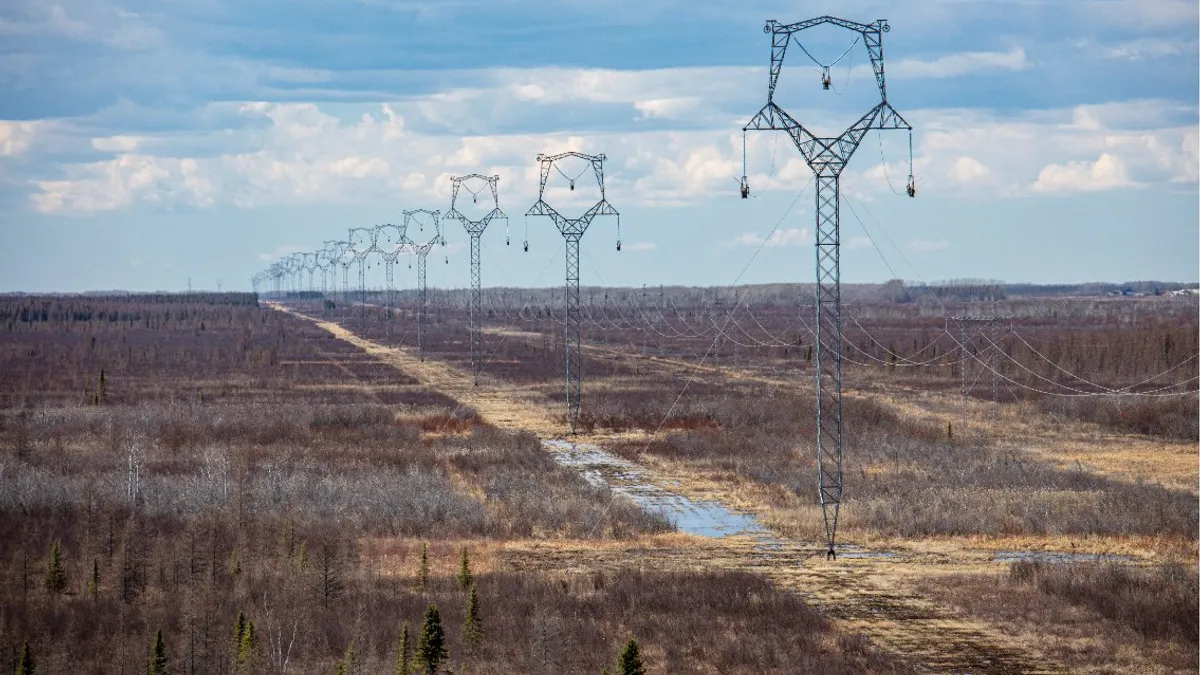Dive Brief:
- How the United States plans, permits and pays for new electric transmission investments will be key to achieving decarbonization goals and growing the use of renewable energy, industry panelists told the House Select Committee on the Climate Crisis on Thursday.
- Transmission projects can take more than a decade to complete and along the way many are abandoned due to time and costs, Emily Fisher, general counsel for the Energy Edison Electric Institute, told lawmakers on the committee. Current regional planning processes "are hindering, not helping, stakeholders identify necessary projects and get them built," she said.
- Committee Chair Rep. Kathy Castor, D-Fla., said there appears to be "common ground" among lawmakers to improve the transmission development process. Republicans, however, question the scope of President Biden's infrastructure and jobs plan, and its focus on making the economy carbon-neutral by 2050.
Dive Insight:
House Democrats are considering the CLEAN Future Act and the LIFT America Act as means to implement Biden's infrastructure and jobs plan, said Castor.
"It's clear we have a consensus here. Investments in transmission would benefit consumers across the country," said Castor. "That's why renewing and modernizing the grid is the centerpiece of President Biden's American jobs plan."
The CLEAN Future Act would require retail electric providers to generate 100% of their power from zero-emissions resources by 2035, and 80% by 2030. The legislation would also require federal regulators to update U.S. transmission policy to better integrate renewables and provide tax credits for transmission expansions. The LIFT America Act includes billions for energy efficiency, grid upgrades and electric vehicle investment.
House Speaker Nancy Pelosi, D-Calif., has targeted July 4 for bringing an infrastructure bill to the House floor.
"This piece of an infrastructure plan, focused on electric transmission, is just going to be critical and I think there is common ground here," Castor said. She asked panelists what they needed in order to push ahead with a clean energy agenda.
"Anything that can drive and help facilitate the regional planning process," Linda Apsey, president and CEO of ITC Holdings, the largest independent electricity transmission company in the country, told the panel.
Utilities are making significant investments every day, Apsey said. "But when it comes to planning across multiple transmission owners, across multiple states and regions, we don't necessarily have the processes to facilitate that," Apsey said.
Apsey also said regulators must consider the full range of transmission benefits a project creates, in order to more efficiently plan and pay for those investments. New transmission provides access to and integration of renewables and existing generation, along with resilience, reliability and economic benefits, Apsey said, "and all of these benefits have to be included as we do our studies."
According to a recent Americans for a Clean Energy Grid report, there are more than 20 "shovel-ready" transmission projects that could add more than 60 GW of renewable energy to the U.S. grid. The study was authored in part by Michael Skelly, founder and CEO of Grid United, an early stage transmission development company.
Skelly told lawmakers on Thursday that the problem of producing cost-effective renewable energy has largely been "solved," and now the electric industry's challenge is to tie together the broader grid.
Inclusion of an Investment Tax Credit for regionally significant electricity transmission lines, "would be an essential tool in developing American grid infrastructure," Skelly said. Biden's plan includes a proposed 30% tax credit being considered in the House and Senate.
Skelly also warned that permitting issues must be addressed or the ITC would be ineffective.
"While the tax credit is beneficial to unlocking these shovel-ready projects, the timeline for new interregional transmission can take a decade to complete," he said.
Rep. Garret Graves, R-La., agreed with the need to speed permitting and environmental review of transmission projects.
"If we are going to realize the grid transformation that is needed, we have to make fundamental changes to our permitting process, to the way that we develop and deliver projects for grid modernization," Graves said. He added, however, that he and other Republicans continue to have concerns over the scope of Biden's proposal.
The United States' high voltage transmission system will need to triple its capacity by 2050, he said, citing a Princeton study on electrification. Shifting transportation and building energy use to electric is a major aspect of Biden's plan to eliminate carbon emissions.
"In terms of updating our grid, I think this is an area where we share the same objectives," Graves said to Castor. "My large concern with what this administration is trying to do, is that putting an extraordinary amount of taxpayer dollars into a system incapable of delivering, only results in more bad outcome."
The United States needs to invest $360 billion in the transmission system through 2030, and $2.4 trillion by 2050, Fisher told lawmakers.
"To remove a critical obstacle to increased investment, it may be necessary to broaden the scope of benefits and beneficiaries considered, particularly as the transmission system, the generating resource mix, and policy goals change and are expected to change over time," Fisher said.















